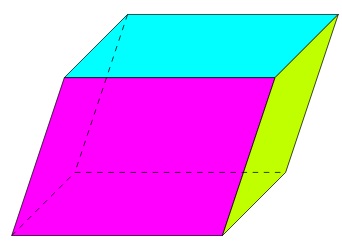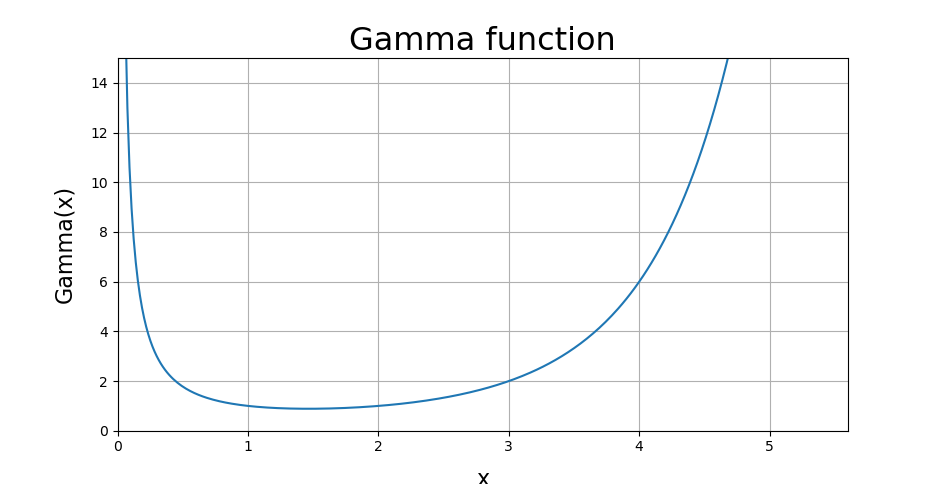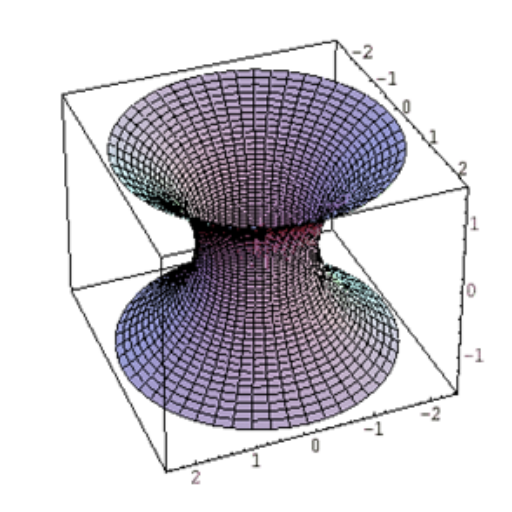 とは
とは
 とは、
とは、 文書内で高品質な図を作成するための強力な描画パッケージです。
文書内で高品質な図を作成するための強力な描画パッケージです。 は数学記号の文書を作成する際に広く使用されている電子組版システムで、
は数学記号の文書を作成する際に広く使用されている電子組版システムで、 はその中で図やグラフィックを直接コード化して描画するために使われます。
はその中で図やグラフィックを直接コード化して描画するために使われます。
例えば、以下のようなコマンドを使用して簡単な図形を描くことができます。
平行六面体
 コード
コード
\begin{tikzpicture}
\draw[fill=magenta] (0,0)--(4,0)--(5,3)--(1,3)--(0,0);
\draw[fill=cyan] (5,3)--(1,3)--(2.2,4.2)--(6.2,4.2)--(5,3);
\draw[fill=lime] (4,0)--(5,3)--(6.2,4.2)--(5.2,1.2)--(4,0);
\draw[dashed] (2.2,4.2)--(1.2,1.2);
\draw[dashed] (0,0)--(1.2,1.2);
\draw[dashed] (1.2,1.2)--(5.2,1.2);
\end{tikzpicture}
出力画像

ベクトル座標付き平行六面体
 コード
コード
\usetikzlibrary{arrows.meta}
\begin{tikzpicture}
\draw[fill=cyan] (0,0)--(4,0)--(5,3)--(1,3)--(0,0);
\draw[fill=green] (5,3)--(1,3)--(2,4)--(6,4)--(5,3);
\draw[fill=violet] (4,0)--(5,3)--(6,4)--(5,1)--(4,0);
\draw[dashed] (1,1)--(2,4);
\draw [->, >={Stealth[round]}] (0,0)--(1,1);
\draw [->, >={Stealth[round]}] (0,0)--(4,0);
\draw [->, >={Stealth[round]}] (0,0)--(1,3);
\draw [->, >={Stealth[round]}] (0,0)--(0,4);
\draw[dashed] (1,1)--(5,1);
\end{tikzpicture}
出力画像

惑星の楕円軌道運動
 コード
コード
\usetikzlibrary{angles, quotes}
\begin{tikzpicture}
\draw (0,0) circle[radius=4cm];
\draw (0,0) circle[x radius=4cm, y radius=2.5cm];
\draw (-4.5,0) -- (4.5,0)
\draw (0,-4.5) -- (0,4.5)
\draw (0,0) -- (1.5,3.7)
\draw (1.5,3.7) -- (3.0,0)
\draw (4.5,0) coordinate (A) -- (0,0) coordinate (B) -- (40:4) coordinate (C) ;
\draw pic["$\psi$", draw, <->, font=\footnotesize, angle eccentricity=1.3, angle radius=0.5cm] {angle=A--B--C};%
\draw (4.5,0) coordinate (A) -- (0,0) coordinate (B) -- (68:4) coordinate (C) ;
\draw pic["$\phi$", draw, <->, font=\footnotesize, angle eccentricity=1.3, angle radius=1.0cm] {angle=A--B--C};%
\foreach \P in {(1.5,3.7),(3,0),(3.08,2.58)} \fill \P circle[radius=1.5pt];
\draw (4.5,0) coordinate (A) -- (3,0) coordinate (B) -- (56:2.75) coordinate (C) ;
\draw pic["$\theta$", draw, <->, font=\footnotesize, angle eccentricity=1.3, angle radius=0.5cm] {angle=A--B--C};%
\node (O) at (-0.2,-0.2) {$O$};
\node (O) at (3.2,-0.25) {$G$};
\fill (4,0) circle[radius=1.5pt] node[below right] {$A$};
\fill (-4,0) circle[radius=1.5pt] node[below left] {$A^{\prime}$};
\draw (0,0) to[out=160,in=105] (-0.3,0.5);
\draw (0,2.5) arc[radius=0.7, start angle=120, end angle=185];
\node (O) at (-0.32,1.23) {$b$};
\node (O) at (-2,0.25) {$a$};
\draw (1.5,3.6) -- (1.5,0)
\fill (1.5,2.31) circle[radius=1.5pt] node[below left] {$P$};
\node (O) at (3.4,2.65) {$M$};
\node (O) at (1.5,4.0) {$Q$};
\filldraw [fill=blue, opacity=.5, draw=Indigo] (4,0) arc (0:68:4) --(3,0)--cycle;
\draw[dash pattern=on 2pt off 2pt on 2pt off 2pt] (3,0) -- (3,-1.3);%ダッシュライン
\draw[<->] (0,-0.7) -- (3,-0.7)%左右矢印範囲指定距離
\node (O) at (1.5,-1.0) {$ae$};
\draw[<->] (0,-0.7) -- (3,-0.7)%離心点距離
\coordinate[label=left:] (A) at (0,0); %点Aの定義
\coordinate[label=right:] (B) at (3,0); %点Bの定義
\coordinate[label=above:] (C) at (1.5,3.7); %点Cの定義
\fill[fill=yellow, opacity=.3] (A)--(B)--(C)--cycle; %三角形OQDをyellow(明るい黄色)に塗る
\draw[very thick] (A)--(B)--(C)--cycle; %三角形ABC
\end{tikzpicture}
出力画像

その他
また大変複雑になりますがこれ以外にも次のような興味深い画像の出力も行えます。
Polarizing microscope
出典元:https://texample.net/tikz/examples/polarizing-microscope
 コード
コード
\documentclass[11pt]{article}
\usepackage{tikz}
\usetikzlibrary{arrows}
\begin{document}
\begin{tikzpicture}[x={(0.866cm,-0.5cm)}, y={(0.866cm,0.5cm)}, z={(0cm,1cm)}, scale=1.0,
%Option for nice arrows
>=stealth, %
inner sep=0pt, outer sep=2pt,%
axis/.style={thick,->},
wave/.style={thick,color=#1,smooth},
polaroid/.style={fill=black!60!white, opacity=0.3},
]
% Colors
\colorlet{darkgreen}{green!50!black}
\colorlet{lightgreen}{green!80!black}
\colorlet{darkred}{red!50!black}
\colorlet{lightred}{red!80!black}
% Frame
\coordinate (O) at (0, 0, 0);
\draw[axis] (O) -- +(14, 0, 0) node [right] {x};
\draw[axis] (O) -- +(0, 2.5, 0) node [right] {y};
\draw[axis] (O) -- +(0, 0, 2) node [above] {z};
\draw[thick,dashed] (-2,0,0) -- (O);
% monochromatic incident light with electric field
\draw[wave=blue, opacity=0.7, variable=\x, samples at={-2,-1.75,...,0}]
plot (\x, { cos(1.0*\x r)*sin(2.0*\x r)}, { sin(1.0*\x r)*sin(2.0*\x r)})
plot (\x, {-cos(1.0*\x r)*sin(2.0*\x r)}, {-sin(1.0*\x r)*sin(2.0*\x r)});
\foreach \x in{-2,-1.75,...,0}{
\draw[color=blue, opacity=0.7,->]
(\x,0,0) -- (\x, { cos(1.0*\x r)*sin(2.0*\x r)}, { sin(1.0*\x r)*sin(2.0*\x r)})
(\x,0,0) -- (\x, {-cos(1.0*\x r)*sin(2.0*\x r)}, {-sin(1.0*\x r)*sin(2.0*\x r)});
}
\filldraw[polaroid] (0,-2,-1.5) -- (0,-2,1.5) -- (0,2,1.5) -- (0,2,-1.5) -- (0,-2,-1.5)
node[below, sloped, near end]{Polaroid};%
%Direction of polarization
\draw[thick,&amp;lt;->] (0,-1.75,-1) -- (0,-0.75,-1);
% Electric field vectors
\draw[wave=blue, variable=\x,samples at={0,0.25,...,6}]
plot (\x,{sin(2*\x r)},0)node[anchor=north]{$\vec{E}$};
%Polarized light between polaroid and thin section
\foreach \x in{0, 0.25,...,6}
\draw[color=blue,->] (\x,0,0) -- (\x,{sin(2*\x r)},0);
\draw (3,1,1) node {Polarized light};
%Crystal thin section
\begin{scope}[thick]
\draw (6,-2,-1.5) -- (6,-2,1.5) node [above, sloped, midway]{Crystal section}
-- (6, 2, 1.5) -- (6, 2, -1.5) -- cycle % First face
(6, -2, -1.5) -- (6.2, -2,-1.5)
(6, 2, -1.5) -- (6.2, 2,-1.5)
(6, -2, 1.5) -- (6.2, -2, 1.5)
(6, 2, 1.5) -- (6.2, 2, 1.5)
(6.2,-2, -1.5) -- (6.2, -2, 1.5) -- (6.2, 2, 1.5)
-- (6.2, 2, -1.5) -- cycle; % Second face
%Optical indices
\draw[darkred, ->] (6.1, 0, 0) -- (6.1, 0.26, 0.966) node [right] {$n_{g}'$}; % index 1
\draw[darkred, dashed] (6.1, 0, 0) -- (6.1,-0.26, -0.966); % index 1
\draw[darkgreen, ->] (6.1, 0, 0) -- (6.1, 0.644,-0.173) node [right] {$n_{p}'$}; % index 2
\draw[darkgreen, dashed] (6.1, 0, 0) -- (6.1,-0.644, 0.173); % index 2
\end{scope}
%Rays leaving thin section
\draw[wave=darkred, variable=\x, samples at={6.2,6.45,...,12}]
plot (\x, {0.26*0.26*sin(2*(\x-0.5) r)}, {0.966*0.26*sin(2*(\x-0.5) r)}); %n'g-oriented ray
\draw[wave=darkgreen, variable=\x, samples at={6.2,6.45,...,12}]
plot (\x, {0.966*0.966*sin(2*(\x-0.1) r)},{-0.26*0.966*sin(2*(\x-0.1) r)}); %n'p-oriented ray
\draw (10,1,1) node {Polarized and dephased light};
\foreach \x in{6.2,6.45,...,12} {
\draw[color=darkgreen, ->] (\x, 0, 0) --
(\x, {0.966*0.966*sin(2*(\x-0.1) r)}, {-0.26*0.966*sin(2*(\x-0.1) r)});
\draw[color=darkred, ->] (\x, 0, 0) --
(\x, {0.26*0.26*sin(2*(\x-0.5) r)}, {0.966*0.26*sin(2*(\x-0.5) r)});
}
%Second polarization
\draw[polaroid] (12, -2, -1.5) -- (12, -2, 1.5) %Polarizing filter
node [above, sloped,midway] {Polaroid} -- (12, 2, 1.5) -- (12, 2, -1.5) -- cycle;
\draw[thick, &amp;lt;->] (12, -1.5,-0.5) -- (12, -1.5, 0.5); %Polarization direction
%Light leaving the second polaroid
\draw[wave=lightgreen,variable=\x, samples at={12, 12.25,..., 14}]
plot (\x,{0}, {0.966*0.966*0.26*sin(2*(\x-0.5) r)}); %n'g polarized ray
\draw[wave=lightred, variable=\x, samples at={12, 12.25,..., 14}]
plot (\x,{0}, {-0.26*0.966*sin(2*(\x-0.1) r)}); %n'p polarized ray
\node[align=justify, text width=14cm, anchor=north west, yshift=-2mm] at (current bounding box.south west)
{Light behavior in a petrographic microscope with light polarizing
device. Only one incident wavelength is shown (monochromatic light).
The magnetic field, perpendicular to the electric one, is not drawn.};
\end{tikzpicture}
\end{document}
出力画像

このカテゴリーでは 環境における強力な描画ツール
環境における強力な描画ツール に関して、実際にサテライトサイトにて使われた画像を参考に詳しく解説していきます。
に関して、実際にサテライトサイトにて使われた画像を参考に詳しく解説していきます。
-

Database
続きを読む
-

2024年11月金運用成績
続きを読む
-

Python描画
続きを読む
-

Python実行環境の構築
続きを読む
-

Rで重回帰分析-大気汚染②
続きを読む
-

2024年11月NISA運用概況
続きを読む
テスト投稿
-

Database
続きを読む
-

2024年11月金運用成績
続きを読む
-

Python描画
続きを読む
-

Python実行環境の構築
続きを読む
-

Rで重回帰分析-大気汚染②
続きを読む
-

2024年11月NISA運用概況
続きを読む
